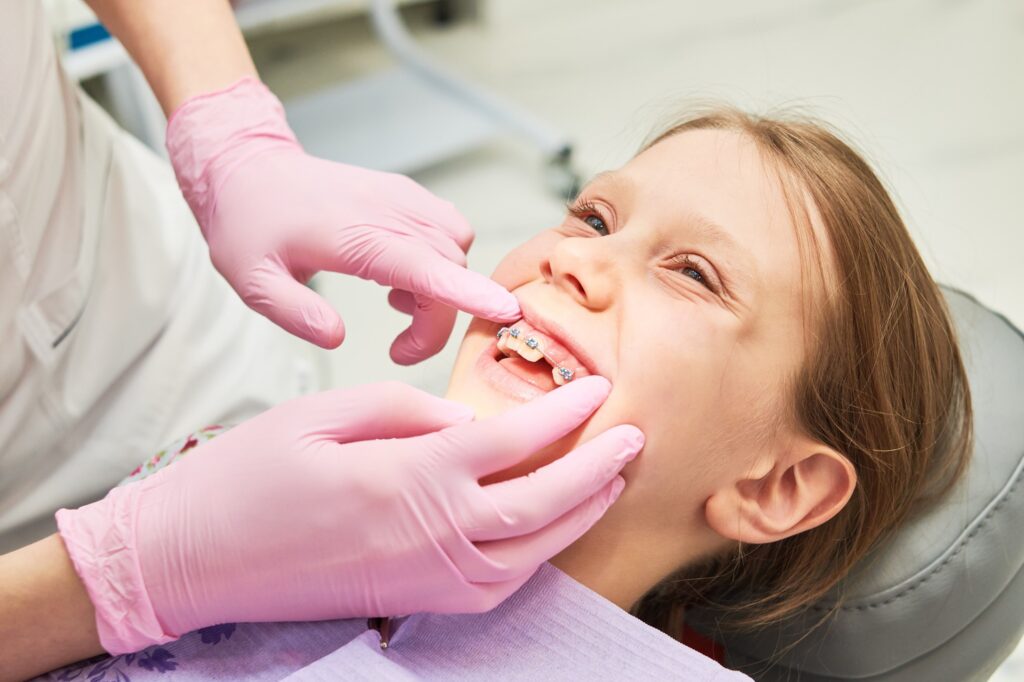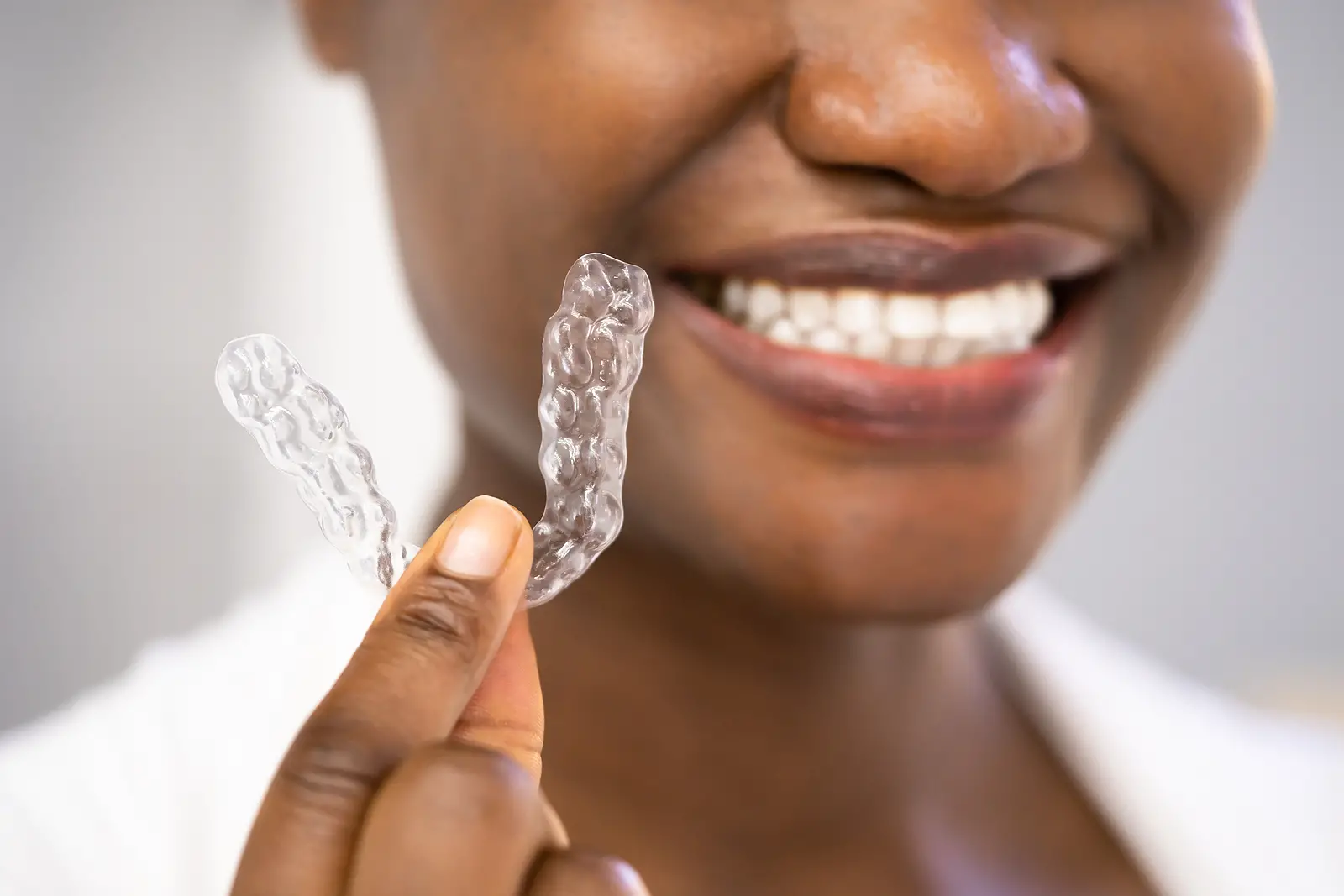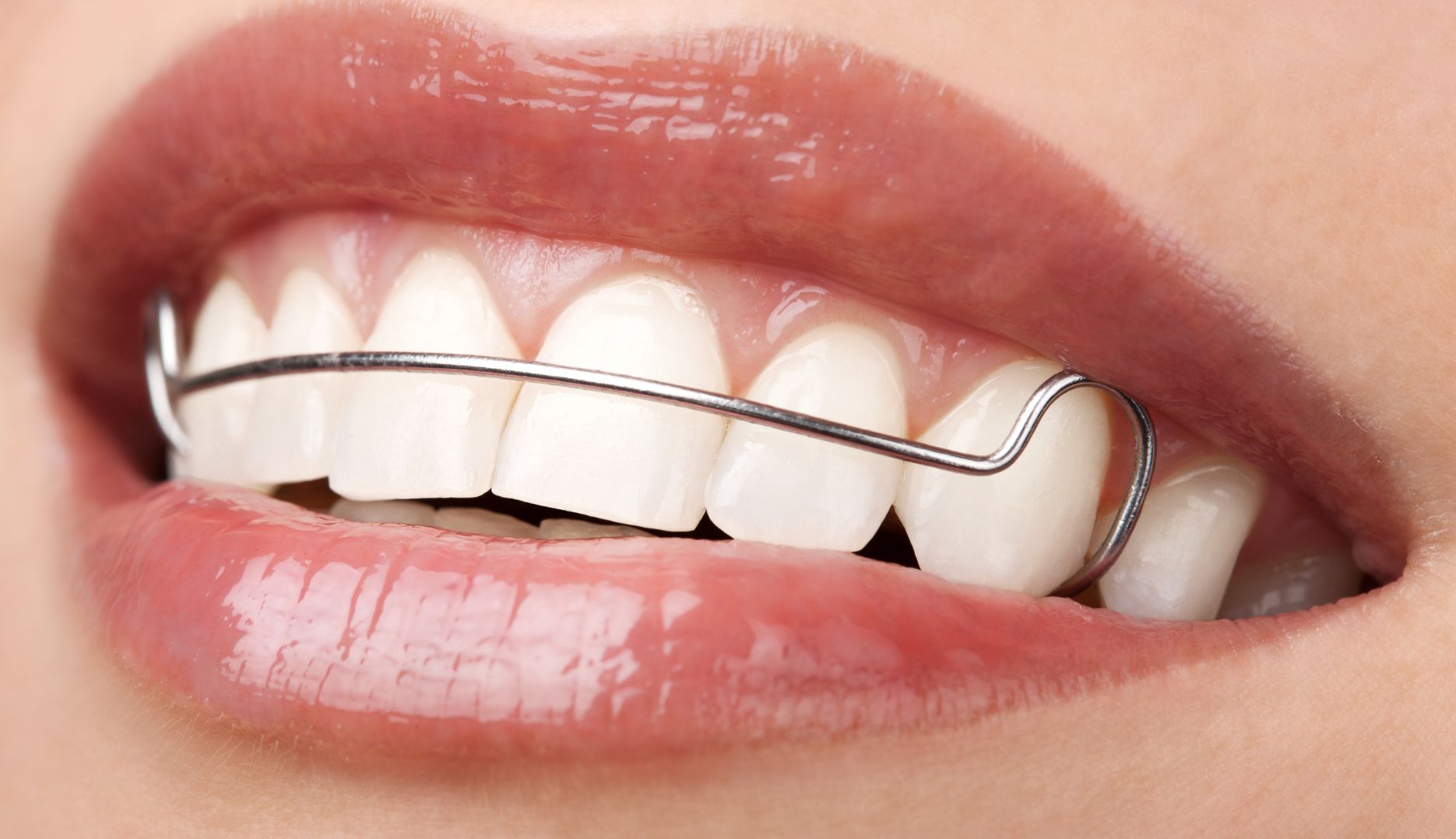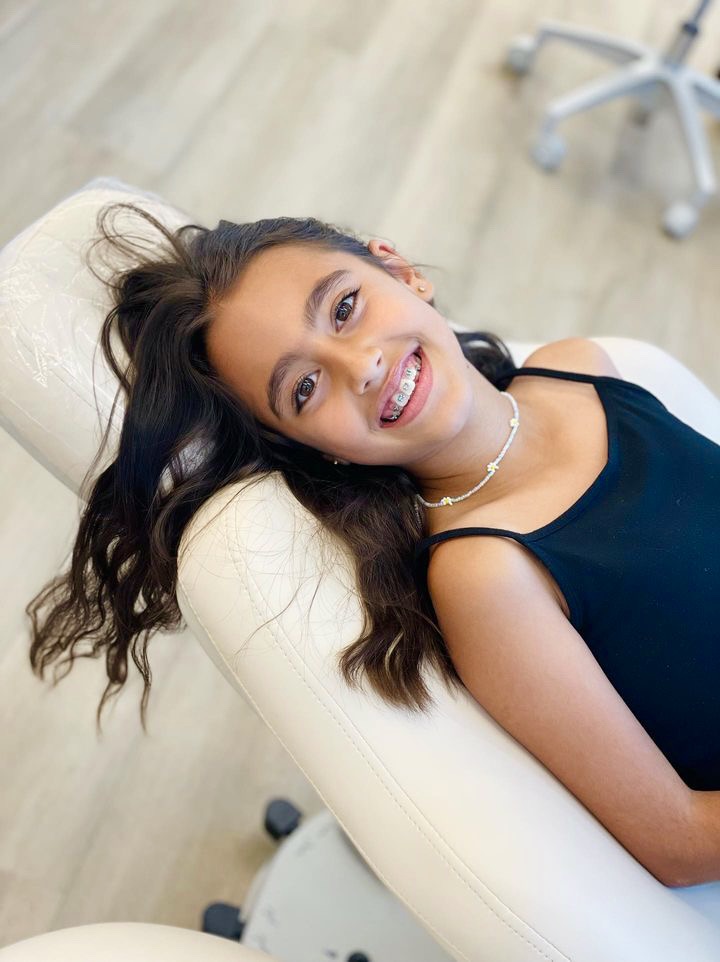Our Blog

Welcome to Twin Teeth Orthodontics!
As board-certified orthodontists and twin sisters, Dr. Michelle Stepanek and Dr. Christine Stepanek are dedicated to giving each patient an individualized treatment plan that suits their specific needs.
Inhale, Exhale, Smile
Discover the Twin Teeth Difference
At Twin Teeth Orthodontics, Drs. Stepanek provide double the expertise, double the care, and double the fun. They both share a passion for orthodontics, which they've been pursuing since the age of 10. They use their specialized training and experience to create efficient treatment plans that deliver amazing results, while also fostering meaningful relationships with their patients.
Drs. Stepanek understand that visiting the orthodontist can be intimidating, which is why they’ve created a calming, spa-like atmosphere for our patients. When you step into their office, you’ll notice lots of lush plants, as well as clean, modern design finishes. Every inch of the space is to help you enjoy a smooth and seamless appointment.
Their office is equipped with state-of-the-art technology, including digital treatment planning and 3D-printed braces, to ensure the most precise and efficient care possible. Plus, they offer Invisalign clear aligners, so you can achieve a beautiful smile without anyone knowing you're undergoing treatment.
Drs. Stepanek are committed to creating a welcoming environment where patients of all ages can feel at ease. If you’re looking for a new orthodontist and call Playa Vista, Marina del Rey, Culver City, Venice, or Westchester home, don’t hesitate to reach out! They can’t wait to pamper both you and your smile soon. Schedule a free virtual consultation or book an appointment today.

Here are some signs to watch for:
● Mouth Breathing
It could be a red flag if your child constantly breathes through their mouth instead of their nose, especially during sleep. Mouth breathing dries out oral tissues and contributes to poor sleep quality. According to research published in the National Library of Medicine, mouth breathing can affect facial development and lead to long-term health issues if left untreated.
● Snoring or Noisy Breathing During Sleep
Snoring is not just an adult problem. It could indicate sleep-disordered breathing or obstructive sleep apnea in children. A study from Yale Medicine notes that about 1% to 5% of children have obstructive sleep apnea, often due to enlarged tonsils or adenoids.
● Restless Sleep or Nighttime Waking
Children with airway problems often toss and turn at night, wake frequently, or sweat excessively during sleep. You may also notice bedwetting or unusual sleeping positions, like keeping the neck open to keep the airway open.
● Daytime Fatigue or Hyperactivity
Sleep disturbances caused by airway issues can result in poor sleep quality, which affects daytime behavior. Some children become sleepy, while others appear hyperactive or have trouble focusing — often misdiagnosed as ADHD. An article in the Child Mind Institute suggests that children with sleep-disordered breathing are more likely to exhibit behavioral issues similar to ADHD.
● Frequent Ear Infections or Sinus Congestion
Recurring ear infections, allergies, or chronic nasal congestion often result from poor nasal airflow or enlarged adenoids, which block normal drainage pathways.
● Speech or Feeding Difficulties
Airway issues may interfere with oral motor development, making it difficult for children to latch, chew, or speak clearly. Difficulties such as speech delays or picky eating often relate to airway function.
Long-Term Effects of Untreated Airway Issues
When left undiagnosed and untreated, airway problems can contribute to:
● Delayed growth or failure to thrive
● Poor academic performance
● Facial development changes (long face, receded chin, narrow jaws)
● Emotional or behavioral struggles
These issues can persist into adulthood if not addressed early.
Signs Your Child May Have an Airway Issues

Clear aligners have revolutionized the way orthodontics is done, and they are increasingly becoming a popular choice for Phase I treatment. These removable, transparent trays gradually shift the teeth into their desired positions. They’re custom-made for each patient based on their unique dental anatomy and treatment needs.
While aligners are more commonly associated with comprehensive orthodontic treatments, many orthodontists are now using clear aligners for Phase I treatments as well. This shift is due to several key benefits that clear aligners offer over traditional braces in early treatment.
- Aesthetics and Confidence Boost
- One of the main concerns for children and their parents when it comes to orthodontic treatment is the appearance of metal braces. Clear aligners offer a discrete, near-invisible option for young patients who may be self-conscious about their smile. This boost in confidence is particularly important in early treatment, when children are still developing their self-esteem.
- Comfort
- Clear aligners are made from smooth plastic, meaning they’re generally much more comfortable than traditional metal braces. There are no brackets or wires that can poke or irritate the inside of the mouth. Additionally, aligners don’t require regular tightening appointments like braces do, which reduces the overall discomfort associated with treatment.
- Removability
- Clear aligners are removable, which makes it easier for young patients to maintain good oral hygiene. Unlike traditional braces, which can trap food and plaque, aligners can be taken out for brushing, flossing, and eating. This can lead to better overall oral health and fewer cavities during the course of treatment.
- No Food Restrictions
- One of the most significant drawbacks of traditional braces is the food restrictions they come with. Hard, sticky, and chewy foods can damage the braces, requiring patients to modify their diet. With clear aligners, children can eat whatever they like—since the aligners are simply removed during meals. This can be a huge plus for both parents and kids.
- Fewer Orthodontic Appointments
- With clear aligners, patients typically require fewer in-person visits to the orthodontist compared to those with traditional braces. Since aligners are changed out every few weeks and require fewer adjustments, parents and kids can benefit from fewer trips to the orthodontist, making it a more convenient option for busy families.
Clear Aligners for Phase I Orthodontics?

Airway-focused orthodontics looks beyond just straightening teeth—it focuses on how your child breathes, sleeps, and grows. Instead of treating crowding as a cosmetic issue, this approach examines whether narrow jaws, mouth breathing, or poor tongue posture are affecting your child’s airway. A restricted airway can lead to snoring, restless sleep, daytime tiredness, and even changes in facial development.
By identifying these issues early, orthodontists can guide jaw growth, improve breathing patterns, and support healthier development. Airway-focused care helps kids sleep better, feel better, and grow with a stronger foundation for lifelong oral health, not only a straighter smile.
Airway-Focused Orthodontics: What Parents Should Know

To maintain oral hygiene with aligners, brush and floss your teeth after every meal before putting the aligners back in, clean the aligners daily with a soft brush and mild soap, and continue with regular dental check-ups. Staying hydrated by drinking plenty of water also helps rinse away food particles and bacteria.
Daily care
- Remove aligners before eating: Always take aligners out for eating, drinking anything other than water, and drinking hot beverages.
- Brush and floss: Brush your teeth thoroughly after every meal before reinserting aligners to remove all food particles and plaque. Flossing is also crucial to clean between teeth.
- Rinse with water: If you can't brush immediately after eating, at least rinse your mouth thoroughly with water to wash away food.
- Clean aligners: Clean your aligners daily. You can use a soft-bristled toothbrush with mild soap or specialized cleaning crystals. Avoid using toothpaste, as it can scratch the aligners.
- Drink water: Sip water throughout the day to keep your mouth moist, help flush out food particles, and freshen breath.
How to maintain your oral hygiene with clear aligners?

To maintain good oral hygiene with braces, it's important to brush your teeth regularly. Brush twice a day for 2 minutes each time using a soft toothbrush and fluoride toothpaste. Be sure to floss daily, using a floss threader or a water flosser to clean those hard-to-reach areas. Additionally, visit your dentist regularly for cleanings and check-ups. Brushing your teeth with braces can be challenging for some patients, but it's essential for keeping your teeth and gums healthy.
How to maintain good hygiene with braces?

Attachments are small tooth-colored bumps placed on your teeth to help your aligners move them more effectively and efficiently. It’s common for some to pop off during treatment - and usually easy to fix!
Here are a few common reasons why attachments come off:
- Hard or sticky foods: Chewing on tough or sticky foods can cause attachments to loosen.
- Oral hygiene: Plaque buildup around attachments can weaken the bond.
- Tooth movement: As your teeth shift, some attachments may loosen naturally.
- Bonding issues: Moisture or saliva during placement can affect how well attachments stick.
Usually, it’s not an emergency if an attachment falls off. However, it’s important to let us know so we can schedule a quick visit to rebond it and keep your treatment on track.
An attachment fell off. Is it an emergency?

When you visit an orthodontist, X-rays play a key role in understanding your smile and creating a personalized treatment plan. Two of the most common types are cephalometric and panoramic X-rays.
A cephalometric X-ray (or ceph) is a side-view image of your head that shows your teeth, jaw, and facial profile. This X-ray helps your orthodontist see how your teeth and jaws fit together and how they relate to the rest of your face. It’s especially useful for diagnosing bite alignment issues and planning how your teeth and jaws will move during treatment.
A panoramic X-ray (or pano) gives a complete, two-dimensional view of your entire mouth in one image. It shows the roots of your teeth, jawbone, wisdom teeth, and any teeth that may be impacted or still developing. This helps your orthodontist evaluate the overall structure of your mouth and determine how complex your case may be before starting treatment.
Together, these X-rays give your orthodontist a detailed picture of your oral health—ensuring your treatment plan is accurate, effective, and tailored just for you.
Why do Orthodontists take Panoramic and Cephalometric X-rays?

Enameloplasty is a specialized cosmetic dental procedure aimed at reshaping and smoothing the outer layer of the teeth, known as enamel, to significantly improve their aesthetic appeal. This technique is particularly effective for addressing minor imperfections, such as small chips, tiny pits, and uneven edges, which can detract from the overall appearance of a smile. By carefully refining the enamel, dental professionals can create a smoother, more uniform surface that enhances the teeth's natural beauty and provides a polished, radiant smile.
What is enameloplasty?

It's important to continue visiting your dentist for regular check-ups and cleanings while you are undergoing orthodontic treatment. It is generally recommended to see your dentist every six months, or more frequently if advised. During these check-ups, your dentist will monitor your oral health and address any potential issues, such as tooth decay or gum disease. They will also clean your teeth and remove any plaque or tartar buildup, which can be more challenging to manage with braces or other orthodontic appliances. In addition, it’s essential to maintain good oral hygiene at home by brushing your teeth after every meal and flossing daily.
How often should I visit my dentist while in Orthodontic Treatment?

Maintaining good oral hygiene is important during orthodontic treatment because braces or other orthodontic appliances can make it more difficult to clean teeth properly. Brackets, wires, and other orthodontic appliances can create nooks and crannies where food particles and plaque can accumulate, which can lead to tooth decay, gum disease, and bad breath. If left unaddressed, these issues can cause permanent damage to teeth and gums. Therefore, it is important to regularly brush and floss teeth to remove food particles and plaque that can accumulate around braces. It is recommended that people with braces brush their teeth after every meal and floss daily. Using an interdental brush or a Waterpik can also be helpful in cleaning hard-to-reach areas. Additionally, it is important to avoid sugary and starchy foods, as they can increase the risk of tooth decay. In summary, good oral hygiene is essential for maintaining healthy teeth and gums during orthodontic treatment.
Why is oral hygiene important while in Orthodontic Treatment?

IPR also known as interproximal reduction, a dental procedure that involves polishing between teeth to create more space for them to move during orthodontic treatment. It is also known as enamel reduction. IPR is a common technique used in orthodontics, particularly with clear aligner therapy, to help improve the alignment of teeth and create a more ideal bite. The amount of enamel removed is very small, usually only a fraction of a millimeter, and is done in a controlled and conservative manner to ensure the long-term health of the teeth.
What is IPR (Interproximal Reduction)?

Attachments are small tooth-colored shapes that are bonded to teeth during clear aligner treatment. They are made of a composite material and are used to help the aligners grip the teeth better, providing more precise and effective tooth movement. Attachments are custom-made for each patient and are placed strategically on the teeth according to the treatment plan designed by the orthodontist. They are usually removed at the end of the treatment.
What are attachments?

Essix retainers are a type of removable retainer frequently used in orthodontic treatment. They are made from a clear plastic material that fits snugly over the teeth, applying gentle pressure to keep them in place. Essix retainers are often preferred over Hawley retainers because they are more discreet and less noticeable. Additionally, they are generally more comfortable to wear compared to traditional wire retainers and are easier to clean.
What are Essix retainers?

Fixed retainers, also known as bonded retainers, are orthodontic appliances that are attached to the teeth using a dental adhesive. They are typically used to maintain the position of the teeth after orthodontic treatment. Unlike removable retainers, fixed retainers cannot be taken out by the patient and are designed to remain in place for a long period of time. Fixed retainers consist of a thin wire that is bonded to the back of the teeth using a dental cement. They are usually placed on the lower front teeth, where teeth tend to shift the most over time. Fixed retainers are a popular choice among orthodontists because they are effective and require little maintenance.
What are fixed retainers?

A Hawley retainer, also known as a wire retainer, is a removable orthodontic appliance used to maintain the position of teeth after orthodontic treatment. It is made of a combination of metal wires and a plastic body designed to fit the roof of the mouth or the lower jaw. The wire is adjusted to fit around the teeth and keep them in place. Hawley retainers are quite common and have been used for many years as a reliable and effective means of retention.
What are Hawley Retainers?
.jpg)
Retainers are essential orthodontic devices designed to preserve the alignment of teeth after braces have been removed. Typically crafted from plastic or acrylic, they are custom-fit to the patient's mouth for optimal comfort and effectiveness. Retainers come in two main types: removable and fixed. Their purpose is to apply gentle pressure to the teeth, which helps prevent them from reverting to their original positions. This role is crucial in the orthodontic treatment process, as retainers help to sustain the results achieved through braces or aligners. The duration for which a retainer should be worn can vary based on individual needs, but it is generally recommended that patients continue to wear a retainer indefinitely to maintain their new smile.
What are retainers?

A headgear is an orthodontic appliance used to correct specific types of malocclusions, such as overbites and underbites. It consists of a metal wire structure that attaches to the back of the teeth and is secured around the head with straps or bands. The headgear applies gentle pressure to the teeth and jawbone, helping to move them into the correct position.Typically, headgear is worn for a specified number of hours each day, often during sleep, and can be removed for eating and brushing. While it may be uncomfortable to wear, headgear can effectively treat certain orthodontic issues.
What is headgear?

Maxillary expansion with a Rapid Palatal Expander (RPE) is an orthodontic treatment designed to widen the upper jaw. This procedure involves attaching an expander device to the upper molars and gradually expanding it using a key over a period of several weeks. It is primarily used to correct a narrow upper jaw, which can lead to issues with bite and teeth alignment. Although this treatment is most effective during childhood or adolescence, when the jaw is still growing, it can also be performed on adults. The procedure is generally well-tolerated and can lead to benefits such as improved breathing, speaking, and chewing, as well as a more symmetrical facial appearance.
Rapid Maxillary Expansion with Rapid Palatal Expander (RPE)

Phase two orthodontics, also known as comprehensive orthodontic treatment, is the second stage of orthodontic care that occurs after a child has lost all of their baby teeth. The goal of phase two treatment is to address any remaining orthodontic issues and achieve the desired final result, such as a correct bite and straight teeth. This stage typically involves the use of braces or aligners and may last anywhere from 12 to 24 months, depending on the complexity of the case. Regular visits to the orthodontist are essential throughout the treatment process to ensure that the teeth are moving as intended.
What is Phase ll Orthodontics?

Phase one orthodontics, often referred to as interceptive orthodontics, is a specialized form of treatment aimed at children who still have their baby teeth and are not yet ready for full-scale orthodontic intervention. This initial phase of treatment serves a crucial purpose, it intercepts and addresses developing orthodontic issues early, taking advantage of the natural growth of the child's jaw and facial bones. By doing so, it helps to prevent more severe problems from arising later on. During phase one treatment, orthodontists may employ a variety of tools, including braces, expanders, and other orthodontic appliances. These devices work to guide the growth of the teeth and jaw, ensuring a healthier alignment as the child matures. After this initial treatment phase, there is typically a period of rest, allowing the child's dental structure to stabilize before transitioning to comprehensive treatment if necessary. This proactive approach not only supports a straighter smile but also paves the way for better oral health in the future.
What is Phase l Orthodontics?

Class III malocclusion is a dental condition where the lower teeth and jaw are positioned further forward than the upper teeth and jaw, resulting in an underbite. This can cause difficulties in biting, chewing, and speaking, and may also cause cosmetic concerns for some individuals. Treatment for Class III malocclusion may involve orthodontic appliances, such as braces or aligners, or in more severe cases, surgery.
What is Class lll Malocclusion?

Class II malocclusion is a dental condition characterized by the upper teeth and jaw being positioned further forward than the lower teeth and jaw, resulting in an overbite. It is commonly referred to as retrognathism or overjet. This misalignment can lead to various issues, including difficulties in biting, chewing, and speaking, which can affect overall oral health and quality of life.To address Class II malocclusion, several treatment options are available. Generally, orthodontic appliances such as braces or clear aligners are used to gradually shift the teeth and jaw into a more aligned position. In cases where the malocclusion is more severe, surgical intervention may be necessary to correct the alignment of the jaw and improve function.If you have concerns about your bite or are experiencing any related difficulties, it’s important to consult with an orthodontic professional who can recommend the most appropriate treatment plan for your individual needs.
What is Class II Malocclusion?

An open bite is a dental condition where there is a gap between the upper and lower teeth when the mouth is closed. This gap can cause difficulty in biting and chewing food and may also affect speech. Open bite can be caused by a variety of factors, including thumb-sucking, tongue-thrusting, or genetics. Treatment for open bite may involve the use of orthodontic appliances, such as braces or aligners, or in more severe cases, surgery.
What is an open bite?

A deep bite is a type of dental condition that occurs when the upper front teeth overlap the lower front teeth too vertically when biting down. This can cause the lower front teeth to bite into the roof of the mouth and the upper front teeth to bite into the gums behind the lower front teeth. A deep bite can be caused by a variety of factors, including genetics, excessive wear of the teeth, and oral habits such as thumb-sucking and tongue-thrusting. It can cause problems with chewing, and speaking, and can put extra pressure on the teeth and jaw joints. It can also cause the lower front teeth to become loose or worn down over time. Often times we recommend against ceramic braces commonly known as "clear braces" on the lower teeth, as the brackets can promote wear on the upper teeth with this type of bite.
What is a deep bite?

Overbite and overjet are two different types of dental conditions that can affect the alignment of your teeth and jaw. Overbite refers to the vertical overlap of the upper front teeth over the lower front teeth when you bite down. A small overbite is normal, but an excessive overbite can cause problems with chewing, speaking, and can put extra pressure on the teeth and jaw joints. Overjet, on the other hand, refers to the horizontal distance between the upper and lower front teeth when you bite down. It is also known as protrusion or buck teeth. Overjet occurs when the upper front teeth are positioned too far forward relative to the lower front teeth. It can cause problems with biting, speaking, and can also put extra pressure on the teeth and jaw joints. Both overbite and overjet can be corrected with orthodontic treatment, such as braces or clear aligners, depending on the severity of the condition.
What is the difference between overbite and overjet?

Crowding is a common dental condition that occurs when there is not enough space in your mouth for all your teeth to fit properly. This can result in teeth overlapping, rotating, or becoming crooked. Crowding can be caused by a variety of factors, including genetics, tooth loss, and poor dental habits. Crowding can lead to a number of dental problems, such as difficulty cleaning your teeth, which can increase the risk of tooth decay and gum disease. It can also cause discomfort, difficulty biting and speaking, and can negatively impact your self-esteem.
What is crowding?

Clear aligners and braces are both orthodontic treatments that can straighten teeth and improve overall dental health. However, they have some differences.Braces consist of brackets, wires, and bands attached to the teeth. They gradually shift the teeth into the desired position over time and are typically made of metal. Braces come in different styles, including traditional metal, champagne, and clear options. In contrast, clear aligners are made from a clear plastic material that is custom-fitted to your teeth. They are nearly invisible and also work to gradually move your teeth into the desired position. One advantage of clear aligners is that they are removable, making it easier to eat and maintain good oral hygiene. While both braces and clear aligners can achieve similar results, the choice between the two depends on various factors, such as the type and severity of dental issues, personal preferences, and lifestyle.
What are the differences between Clear Aligners and Braces?

Clear aligners are a type of orthodontic treatment that uses a series of clear plastic trays to gradually shift teeth into their proper position. They are an alternative to traditional braces and are virtually invisible, making them a popular choice for adults who are looking to straighten their teeth without the appearance of metal braces. Clear aligners are custom-made for each patient and are typically changed every two weeks to keep teeth moving in the right direction. They can be removed for eating and brushing, making them a convenient option for many people.
What are Clear Aligners?

Braces are orthodontic appliances that are used to correct dental problems such as malaligned teeth, overbites, underbites, and crowded teeth. They consist of brackets that are attached to the teeth and connected by wires and small rubber bands. Braces apply gentle pressure to the teeth to gradually move them into the correct position. The treatment time can vary depending on the severity of the dental issue, but it usually takes between 18 to 24 months to complete. Here at Twin Teeth Orthodontics we offer traditional Metal braces, Champagne braces, and Clear Braces.
What are Braces?
.jpg)
While both dentists and orthodontists work to improve the oral health of their patients, there are some key differences between the two. A dentist is a general practitioner who provides a range of dental services, including preventive care, cleanings, fillings, extractions, and some cosmetic procedures. An orthodontist, on the other hand, is a dental specialist who focuses on correcting misaligned teeth and jaws using braces, aligners, and other orthodontic appliances. Orthodontists have additional training and education beyond dental school and are experts in diagnosing and treating malocclusions (improper bites). While a dentist may be able to provide some orthodontic treatments, such as simple cases of teeth straightening with clear aligners, they may not have the same level of expertise and training as an orthodontist. Orthodontists have specialized knowledge and experience in the field of orthodontics and are better equipped to handle complex cases, including those requiring surgical intervention. Overall, seeing an orthodontist for orthodontic treatment is recommended for optimal results and to ensure the best possible care for your teeth and jaw.
What is the difference between a Dentist and an Orthodontist?

A Board Certified Orthodontist is a dental specialist who has completed an advanced education program in orthodontics and dentofacial orthopedics. After completing their education, they must pass a set of rigorous written and clinical exams administered by the American Board of Orthodontics (ABO) to achieve certification. The board certification process is voluntary and is intended to demonstrate a high level of clinical excellence and knowledge in the field of orthodontics. Board certification is an indication that the orthodontist has demonstrated a commitment to providing the highest level of care for their patients.
